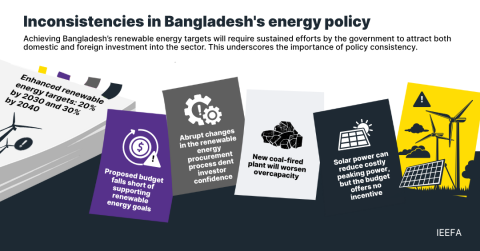In Norway’s Divestiture, Coal’s Shabby Finances Matter; Executive Intransigence Is a Factor Too
In all the blur of coverage around Norway’s decision to direct its pension-fund managers to divest further from coal holdings, the most compelling argument to do so was sometimes overlooked.
To me, nothing says get out of coal more than the financial angle. Coal companies have already lost billions of dollars over the past few years. They will only lose more.
The takeaway here is that while the industry has absorbed horrific losses, it has little prospect for gains anytime in the foreseeable future. I’ve talked about that quite a bit in this space. Yesterday, for instance, I noted how huge coal-industry hurdles are being openly acknowledged by people outside the industry, including Matthew K. Rose, the executive chairman of Burlington Northern Santa Fe Railway. Rose said just this month that the millions of dollars the railroad has put into Powder River Basin coal infrastructure was probably all for naught. PRB coal, Rose said, is becoming a stranded asset.
Last week I explained that Norway had acted because its pension-fund fiduciaries, members of the country’s elected parliament, had simply told reluctant money managers to get it done.
THOSE FIDUCIARIES KNOW, IN PART FROM RESEARCH BY IEEFA, THAT COAL IS NOT A SOUND INVESTMENT. In fact, we published a report we shared with Norway lawmakers ahead of their decision in which we noted that the Stowe Global Coal Index lost 70 percent of its value from 2010-2015, a time in which global stock indexes gained value at a steady if modest rate, and that nothing today indicates a reversal in coal’s slide. I mentioned at the time that the situation for U.S. coal producers is even worse than global indexes suggest. Most of the largest U.S. coal producers are on financial life support, and U.S. coal-fired power generation is losing value, too, as competition from wind and solar, from low natural gas prices, and from policy decisions shrink its share of energy markets.
The financial argument in and of itself—all moral, ethical and environmental issues aside—is more than enough to steer investors clear of coal, and that includes investors prone to believing pundits who say now is the time to bottom-feed, that coal stocks can’t go any lower. My advice is to heed the red flags that include ones like this shrill but fundamentally sensible headline: “Run Screaming From the Coal Stocks Bloodbath: Don’t Be Dragged Into the Value Trap That Is Coal Stocks These Days”
BEYOND ITS WEAK FINANCIALS, THE COAL SECTOR HAS CREATED AN INVESTOR BARRIER IN ITS UTTER UNWILLINGNESS TO ENGAGE in a meaningful dialogue around how the industry could get its legs back (and why investors should rest assured they aren’t dumping good money after bad.)
On this point the industry has either been mum or defensive—one could go so far as to say offensive, too, as I wrote last week of Peabody Energy and its insistence that its many woes are somebody else’s fault (“Seeing Through Peabody’s Attack-the-Messenger Strategy”).
Institutional investors have tried classic “engagement strategies” with the coal industry in hopes of establishing some discussion about how the industry could turn itself around. “Engagement” is a timeworn tactic that often gets the attention of executives who know their companies can do better and are willing to step out of their bubbles and listen to other voices.
The typical response from the coal industry, however, has been no response at all. “Does never work for you?” coal executives say. “How is never?”
Indeed, the industry seems to have mindlessly dug its heels in against core energy-market forces that are gaining global and unstoppable momentum. Executives will not discuss the likelihood of carbon regulation, they deny flaws in their business models that include self-bonding gaps and that have them in the hot seat over royalty loopholes, and they selfishly battle public-health policy that would curb pollution and address climate change.
The cumulative impact on the industry of environmental issues, climate-change awareness, financial risk and the industry’s refusal to engage with investors—indeed with the world—all combine to undermine whatever arguments remain for investing in the sector.
There’s no rationale for staying with coal, and any investor with any fiduciary responsibility to its clients or members should step back from it now.
Tom Sanzillo is IEEFA’s director of finance.















